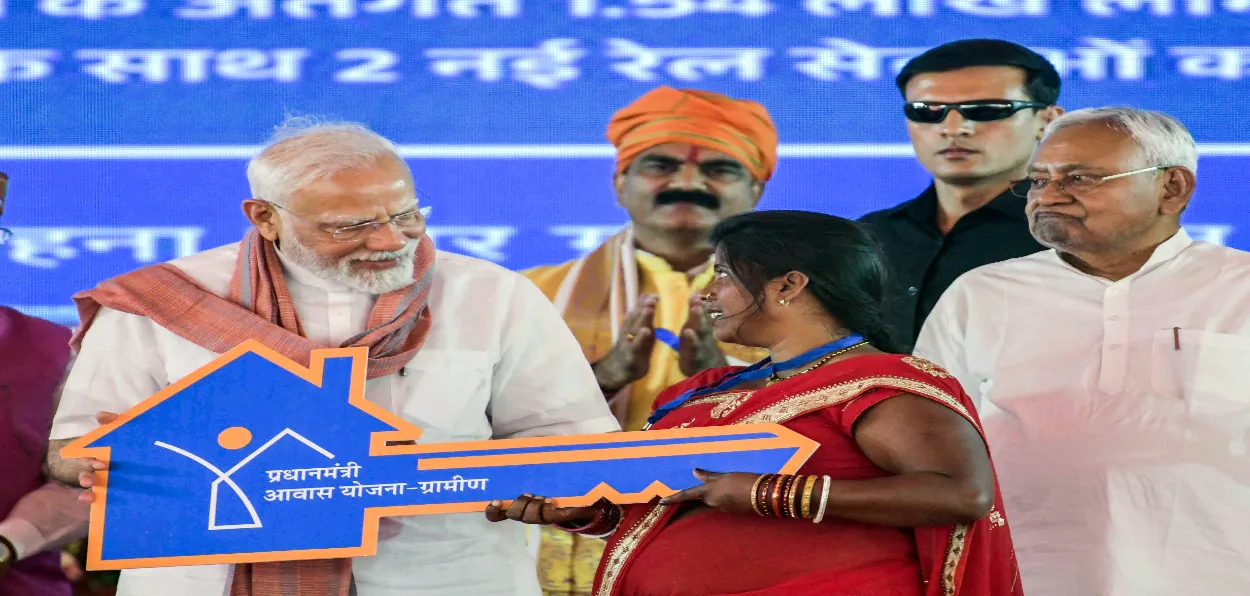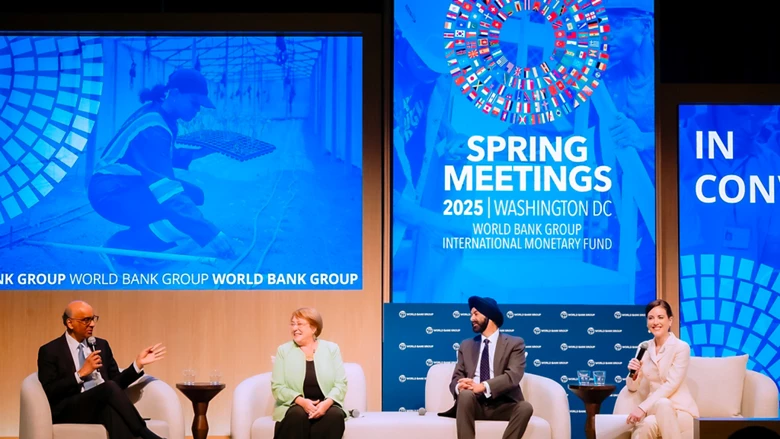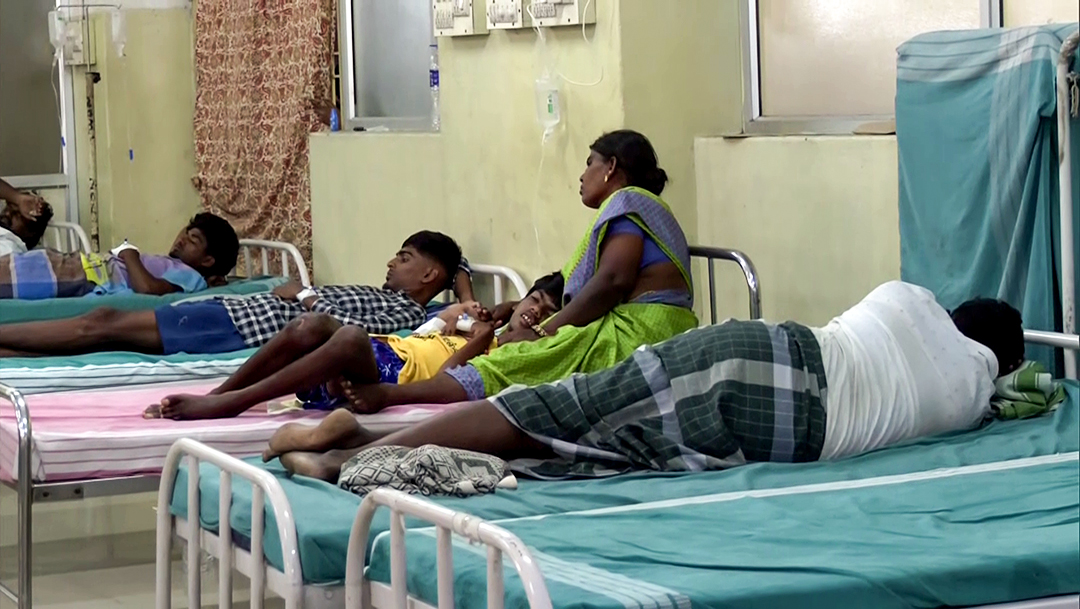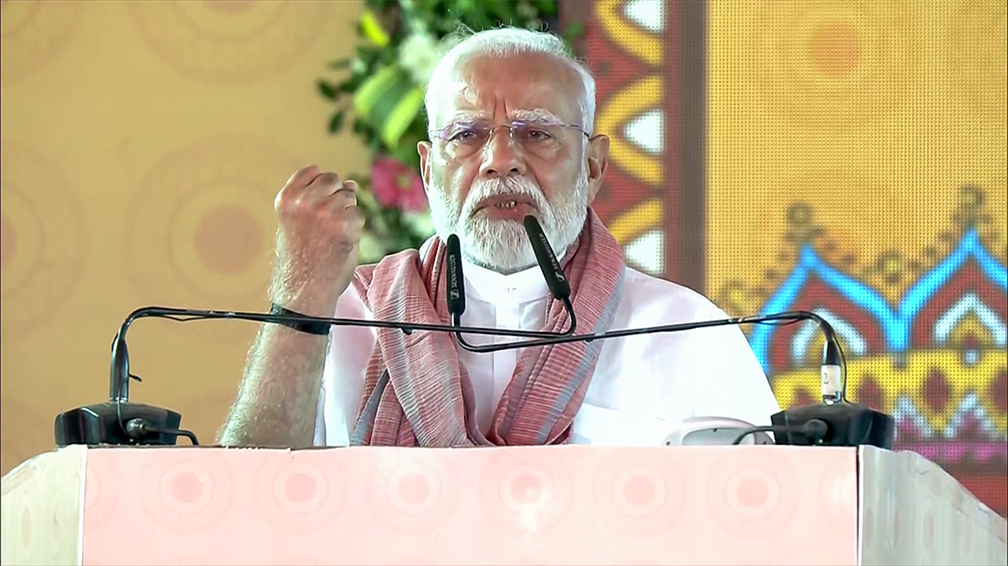
New Delhi
As the Narendra Modi government celebrates its 11 years, none other than the World Bank has applauded India for lifting 171 million from extreme poverty between 2011-12 and 2022-23 nearly corresponding to the Modi government’s term.
The World Bank's Spring 2025 Poverty and Equity Brief states that India's extreme poverty rate declined sharply to 5.3% over a decade, from 27.1% in 2011-12, even as the World Bank revised its threshold poverty line upward to $3 per day.
In contrast, Pakistan faces significant challenges with nearly 45% of its population living in poverty and 16.5% in extreme poverty.
This achievement is the result of policies that focus on inclusive development, targeting both rural and urban areas, as well as welfare schemes, economic reforms, and increased access to essential services.
The World Bank report highlights how these efforts have significantly impacted the lives of millions, narrowing the poverty gap across the country.
The Poverty and Equity Briefs (PEBs) from the World Bank highlight trends in poverty, shared prosperity, and inequality for over 100 developing countries. Published twice a year for the Spring and Annual Meetings of the World Bank Group and the International Monetary Fund, these briefs offer a snapshot of a country’s poverty and inequality context, ensuring poverty reduction remains a global priority.
Each PEB includes a two-page summary that presents recent developments in poverty reduction, along with updated data on key development indicators.

World Bank venue for spring meetings
These indicators cover various aspects of poverty, including rates of poverty and the total number of poor, using both national poverty lines and international benchmarks ($2.15 for extreme poverty, $3.65 for lower-middle-income, and $6.85 for upper-middle-income).
The briefs also include comparative trends in poverty and inequality over time and across countries, a multidimensional poverty measure that accounts for non-monetary deprivations like education and basic services, and inequality measurements using the Gini Index.
The report says that in rural areas, extreme poverty fell from 18.4 percent in 2011-12 to 2.8 percent in 2022-23.
In Urban centres, extreme poverty reduced from 10.7 percent to 1.1 percent over the same period.
The World Bank finds that India has made strong gains in reducing poverty at the lower-middle-income level, measured at 3.65 US dollars per day. Millions have benefited from this broad-based growth across both rural and urban areas.
says: “India’s poverty rate at the 3.65 dollars per day line fell from 61.8 percent in 2011-12 to 28.1 percent in 2022-23, lifting 378 million people out of poverty.
“Rural poverty declined from 69 percent to 32.5 percent, while urban poverty dropped from 43.5 percent to 17.2 percent.
The rural-urban poverty gap narrowed from 25 to 15 percentage points, with a 7 percent annual decline between 2011-12 and 2022-23.”
The report notes that significant progress has been made in reducing extreme poverty across India, with key states playing a vital role in both the decline of poverty and the advancement of inclusive development.
 Citizens being treated in a hospital under Ayushman Yojna
Citizens being treated in a hospital under Ayushman Yojna
The five most populous states i.e. Uttar Pradesh, Maharashtra, Bihar, West Bengal, and Madhya Pradesh, represented 65 percent of India’s extreme poor in 2011-12. These states contributed to two-thirds of the overall decline in extreme poverty.
As per the World Bank’s report, India has made significant strides in reducing non-monetary poverty, and future poverty estimates are expected to change based on updated global standards.
Non-monetary poverty, as measured by the Multidimensional Poverty Index (MPI), which considers factors like education, health, and living conditions, declined from 53.8 percent in 2005-06 to 16.4 percent by 2019-21.
The World Bank’s Multidimensional Poverty Measure stood at 15.5 percent in 2022-23, reflecting ongoing improvements in living conditions.
With revised international poverty lines (the minimum income needed to meet basic needs) and the adoption of 2021 Purchasing Power Parities (PPPs) (which adjust for differences in living costs between countries), the new poverty rates for 2022-23 are expected to be 5.3 percent for extreme poverty and 23.9 percent for lower-middle-income.
India’s consumption-based Gini index improved from 28.8 in 2011-12 to 25.5 in 2022-23, indicating a reduction in income inequality.
India has witnessed positive trends in employment growth, particularly since 2021-22, with significant improvements in both rural and urban areas, as highlighted in the World Bank's report.
Employment growth has outpaced the working-age population since 2021-22, with rising employment rates, especially among womenpoverty.
 Prime Minister Narendra Modi leading the war against India's poverty
Prime Minister Narendra Modi leading the war against India's poverty
Urban unemployment fell to 6.6 percent in Q1 FY24/25, the lowest since 2017-18.
Recent data indicates a shift of male workers from rural to urban areas for the first time since 2018-19, while rural female employment in agriculture has grown.
Self-employment has risen, particularly among rural workers and women, contributing to economic participation,
The report concludes that India has made remarkable progress in poverty reduction over the past decade.
The Spring 2025 World Bank's Poverty and Equity Brief underscores India's commitment to inclusive development.
The sharp decline in both extreme and lower-middle-income poverty, along with the narrowing rural-urban poverty gap, reflects the effective efforts of the Government of India.
READ MORE: Assam's fishery king Nazrul Haque changed flood calamity into livelihood opportunity
Additionally, the rise in employment, especially among women, and the reduction in multidimensional poverty point to broader improvements in living standards. As India continues its journey, these achievements serve as a solid foundation for sustained progress in tackling poverty and inequality.
